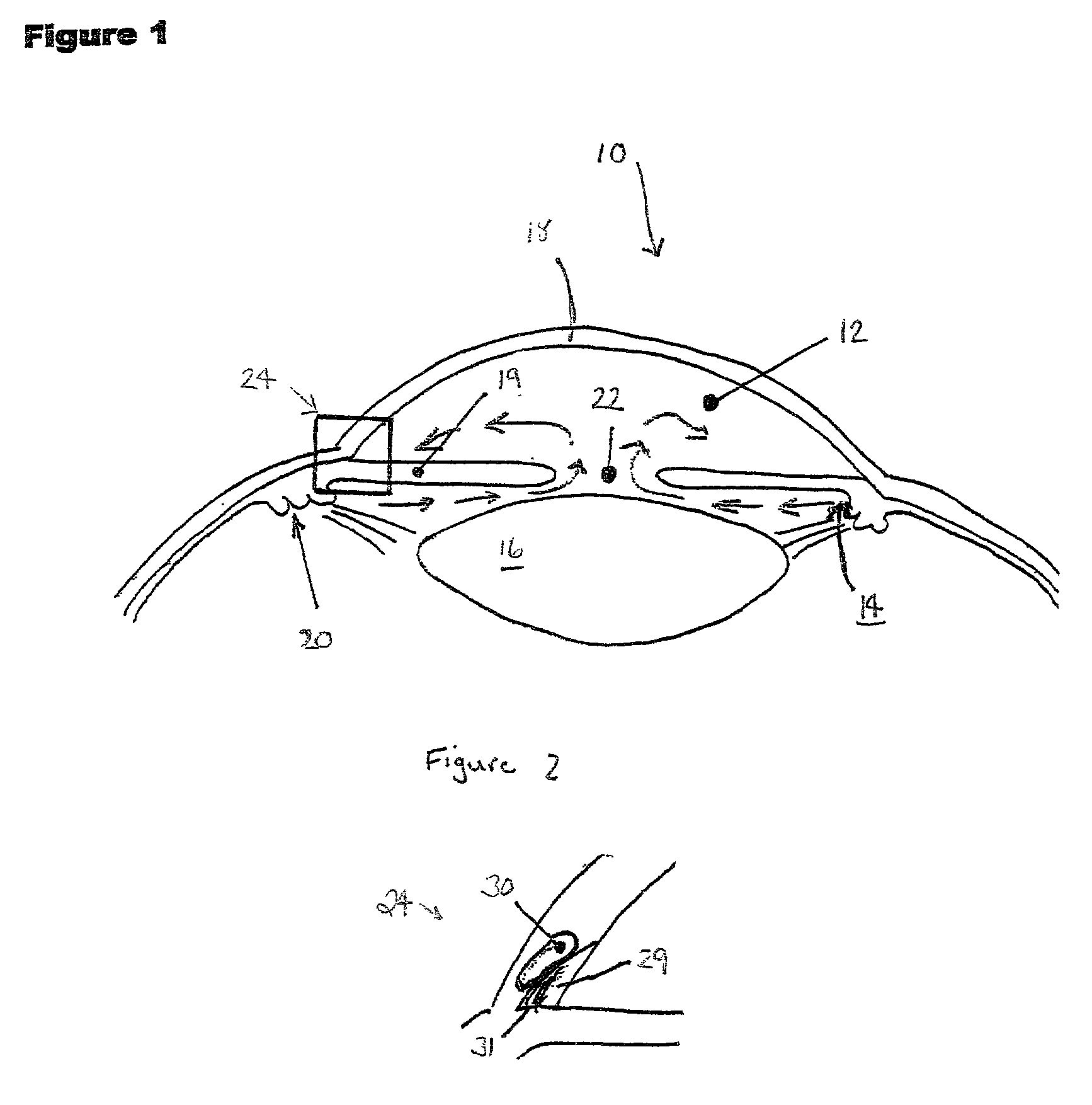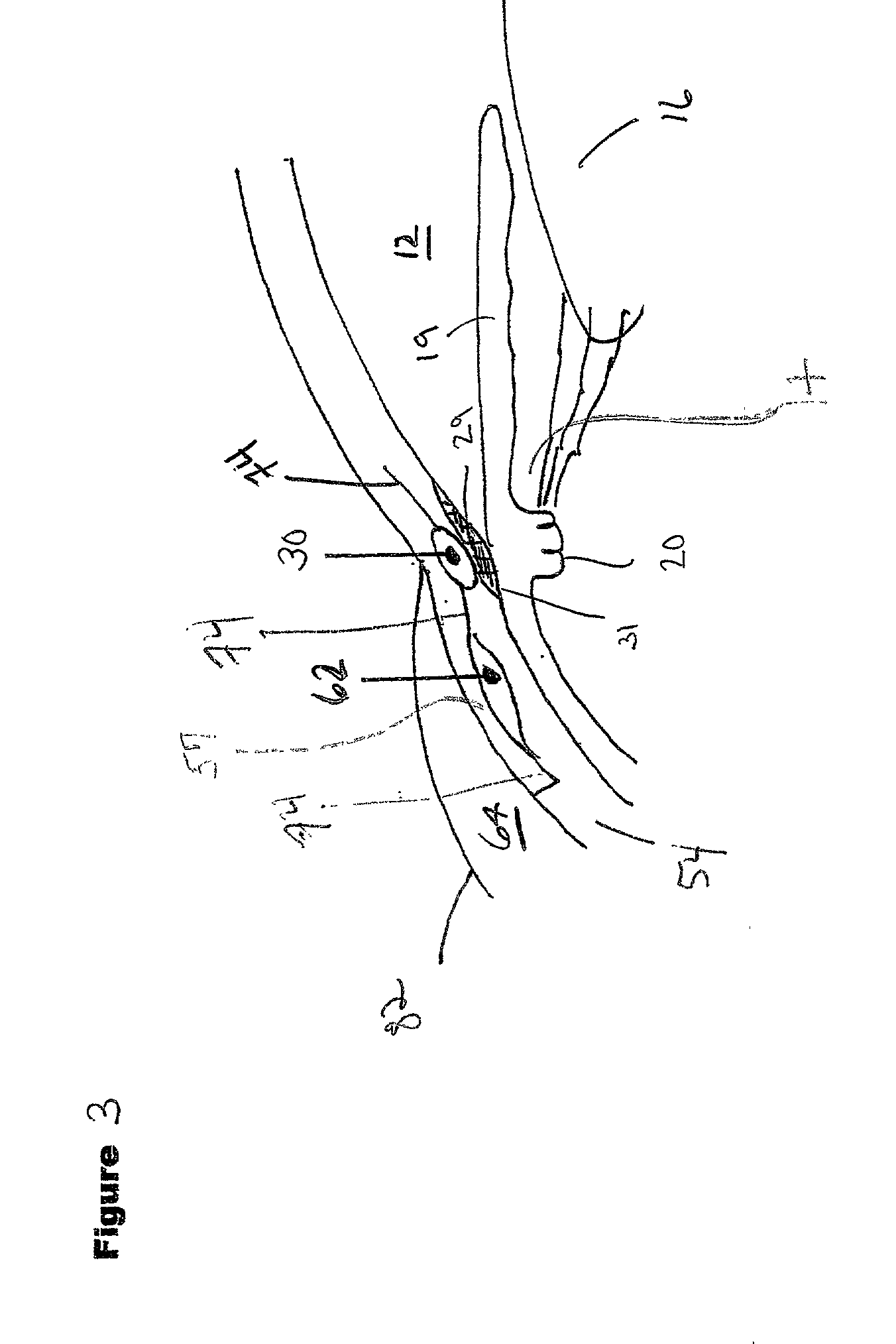Method and apparatus for treatment of glaucoma
a technology for glaucoma and glaucoma treatment, applied in the field of glaucoma treatment apparatus and methods, can solve the problems of glaucoma being a significant public health problem, affecting the treatment effect, so as to slow or stop the progression of damage and visual loss, and reduce intraocular pressure. , the effect of lowering the pressure level
- Summary
- Abstract
- Description
- Claims
- Application Information
AI Technical Summary
Benefits of technology
Problems solved by technology
Method used
Image
Examples
Embodiment Construction
[0081] Unlike viscocanalostomy, the implantation of the present invention does require entrance into the anterior chamber; however, it is under very controlled circumstances, and with little, if any, surgical manipulation inside the eye. By intubating the anterior chamber, any variability in the permeability of Descemet's membrane, a major concern with "nonpenetrating" operations such as viscocanalostomy, is eliminated. The present invention conducts aqueous directly into Schlemm's canal, avoiding obstruction by scar tissue that might form within an intrascleral dissection 62. The device contains no valves that can malfunction. Instead, it relies upon the known pressure gradient between the anterior chamber (9+ mmHg) and the venous circulation (7 mmHg) to permit the desired level of aqueous humor runoff and intraocular pressure.
[0082] Referring now to the drawings wherein the showings are for purposes of illustrating at least one preferred embodiment of the invention only and not fo...
PUM
 Login to View More
Login to View More Abstract
Description
Claims
Application Information
 Login to View More
Login to View More - R&D
- Intellectual Property
- Life Sciences
- Materials
- Tech Scout
- Unparalleled Data Quality
- Higher Quality Content
- 60% Fewer Hallucinations
Browse by: Latest US Patents, China's latest patents, Technical Efficacy Thesaurus, Application Domain, Technology Topic, Popular Technical Reports.
© 2025 PatSnap. All rights reserved.Legal|Privacy policy|Modern Slavery Act Transparency Statement|Sitemap|About US| Contact US: help@patsnap.com



